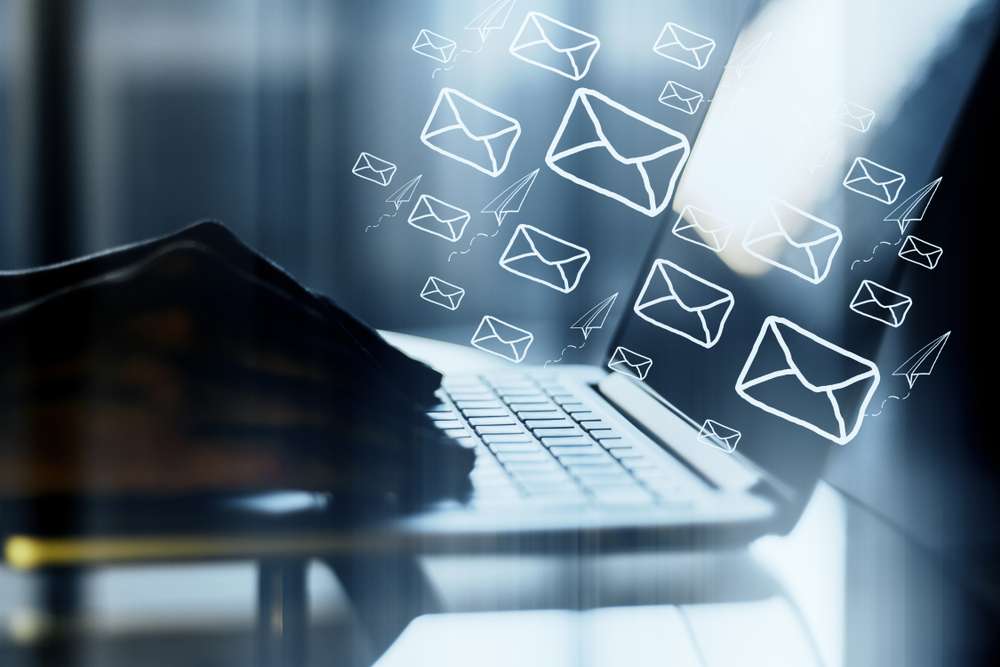
Understanding the Relevance of Successful Email Management
Successful email management is not just a fancy term used in professional and educational fields but a necessary skill needed in the fast-paced world of today. With the increase in communication flow, whether it’s a corporate office, an educational institution, or an individual freelancer, managing one’s inbox can become challenging without an effective email management strategy. Understanding its importance is the first stepping stone towards achieving a clutter-free inbox and, ultimately, improved productivity.
Emails constitute a significant part of professional communication. From scheduling meetings to sharing necessary documents, emails play a vital role. However, with an influx of messages received daily, it’s quite easy for important emails to get lost among less significant messages. It may result in missed deadlines, overlooked tasks, or even lost opportunities, highlighting why effective email management is critical.
Moreover, a disorganized inbox reflects a rushed and chaotic working style, thereby affecting your professional image. An overflowing email inbox can also lead to stress and distraction, which might affect daily productivity. On the other hand, a well-managed email system where each email is in its respective folder offers peace of mind, a better professional outlook, and ease in accessing necessary information whenever required, thus minimizing the time spent searching for specific emails.
Successful email management also promotes better team collaboration and communication. With shared inboxes and email threads, teams can seamlessly interact, discuss, and collaborate on projects. It keeps everyone on the same page, reduces communication costs, and eliminates the need for unnecessary meetings.
Furthermore, it provides security and confidentiality. Important documents and confidential data are usually shared through emails. Good email practices like not opening suspicious messages, keeping a regular check on sent items, and timely deleting unnecessary emails can significantly reduce the risk of cyber-attacks and data breaches.
For learning development professionals, especially, successful email management is key to ensure smooth functioning and continuous learning. With an organized inbox, they can better manage student queries, training materials, updates on learning modules, among other critical communications. This practice aids them in providing timely responses and ensuring that the educational or training goals are met effectively.
In a nutshell, successful email management is integral for saving time, reducing stress, improving productivity, and fostering better professional relationships. Recognizing its significance is the first step in taking control of your inbox, and your professional and personal life. Now, the task is to learn how to achieve it, which will be discussed in the following chapters.

Key Components of Effective Email Management
Email management can seem like a daunting task due to the countless messages we receive on a daily basis. However, understanding the key components of effective email management can help in not only reducing inbox clutter but also improving productivity. Here are the crucial parts:
1. Inbox Organization: This includes creating separate folders or labels for different categories of emails, such as work, personal, newsletters, promotions, and more. By doing this, you can quickly locate whatever you need without having to comb through numerous irrelevant emails.
2. Filtering: Most email platforms offer options to filter emails, which can automatically sort incoming emails into the right folders. You can set up filters based on the email sender, subject line, or keywords in the content. This can drastically reduce the time spent on sorting emails manually.
3. Unsubscribing: One of the main sources of email clutter is subscriptions to newsletters, alerts, and promotions that we aren’t interested in. Regularly reviewing these subscriptions and unsubscribing from the unnecessary ones can significantly reduce the volume of incoming emails.
4. Regular Archive and Delete: Some emails are essential only for a limited time. Once they’ve served their purpose, they should be either archived or deleted to prevent the inbox from becoming overcrowded.
5. Use of Email Tools: Several email management tools are available on the market that can greatly simplify the process. Some tools can automatically sort and filter emails, send auto-replies, set up follow-up reminders, and more.
6. Action-Oriented Approach: Adopting an action-oriented approach to your emails can drastically improve efficiency. This means either responding, delegating, scheduling, or deleting every email upon reading it. By doing so, you avoid the need to revisit the same emails multiple times.
7. Email Etiquette: Part of effective email management is also about how you send emails. Keeping emails succinct, using clear subject lines, and replying promptly can help in maintaining a clean, organized inbox.
In conclusion, efficient email management relies on a combination of an organized approach, utilizing the right tools, and adhering to good email etiquette. These practices are not only practical but can also help alleviate stress and enhance productivity.

Strategies for Efficiently Sorting and Organizing Emails
Effectively managing a flood of emails, without losing track or wasting undue time on it, requires a couple of strategies and tactics. These methods can help transform your inbox from a source of stress into an organized, streamlined asset supportive of your professional operations.
First, it is critical to understand the ‘big picture.’ Emails should work for you, not against you. To ensure this, you need to devise a system that complements your work style, instead of fighting against it.
Firstly, categorize emails based on priority. The intuitive way to manage emails would be to deal with them as they arrive. However, this isn’t the most efficient method. Instead, try to prioritize your emails into categories such as ‘urgent’, ‘important but not urgent’, ‘delegate’, ‘defer’, and ‘delete’. This strategy is essentially a version of the ‘Eisenhower Box,’ a time management principle used by successful businessman and the 34th U.S. President, Dwight Eisenhower. This approach allows you to quickly determine which emails need your immediate attention and which ones could be handled later.
Secondly, make the effective use of filters. The use of filters can be a game-changer in managing your emails. Most email services provide options to automatically sort incoming emails into specific folders based on the sender, the subject line, or other criteria. For example, all emails from a particular colleague could be automatically sorted into a dedicated folder, making them easier to locate when needed.
Thirdly, labels, tags, or categories can also be instrumental. They help in more refined sorting of the emails. You might have multiple projects or domains to deal with. Labeling emails according to the project or department they relate to can help make things clear and accessible.
Furthermore, we have ’email threading’ or ‘conversation view’. Keeping track of individual email threads can be a confusing task if not handled correctly. Enabling conversations view in your email can assist in maintaining clarity by grouping all replies with their original email.
Another strategy is to set specific times to check email. This helps in maintaining focus and preventing the derailment of attention. Decide on a few times throughout the day to check your inbox and stick to it.
The ‘two-minute rule’ is an additional strategy to efficiently manage emails. The concept is simple if an email will take two minutes or less to reply to or action, then it’s best to handle it immediately. This prevents small tasks from piling up and becoming overwhelming.
On the side of organizing, creating a clear, straightforward folder system in your email client can mean the difference between an overflowing inbox and a manageable one. Separate business and personal emails. Store emails based on projects, teams, or other categories relevant to your workflow. Remember, the best folders are those which reduce your decision-making time.
Finally, never forget clearing out your inbox regularly. Continuously aim for ‘Inbox Zero,’ a concept where you keep your email inbox count at zero. Delete unnecessary emails, archive the ones you may need to reference later, and respond to those that need your immediate attention.
These are not fixed strategies set in stone. You can customize them according to your work style and needs. With some consistency and discipline in following these strategies, you can progressively turn email from a daily hassle into a productive tool. Happy emailing!

Importance of Regular Email Cleaning
Regular email cleaning plays a significant role in successful email management, particularly for continuous learning development professionals who constantly deal with a large influx of emails. This process involves sorting out and getting rid of unnecessary emails, thereby keeping your mailbox uncluttered and easily navigable.
The importance of regular email cleaning can be understood in three main perspectives – productivity, security, and reputation management.
From a productivity standpoint, an overfilled inbox can create an overwhelming and daunting work atmosphere. Along with wasting valuable time, navigating through such an inbox to find meaningful communication can be difficult. Regular email cleaning ensures that every email you see in your inbox is crucial. This prevents wasting time on dealing with trivial or irrelevant emails, allowing more focus on what really matters. This efficiency is particularly beneficial for professionals in the field of continuous learning development, who need to streamline communication for optimal results.
Regular email clearing also enhances information security. A cluttered mailbox opens more avenues for potentially harmful emails or phishing scams to lurk unnoticed. By routinely cleaning your emails, deleting unnecessary ones, and marking suspicious emails as spam, you can introduce an additional layer of protection for your information. This regular purge of inessential and potentially harmful emails is essential when handling sensitive student information or proprietary academic content in online learning environments.
Lastly, proficient email cleaning contributes significantly to reputation management. As a learning development professional, the state of your inbox can reflect on your professional image. A clean, well-maintained inbox sends out a positive impression about your organizational skills and professionalism to your peers, students, and supervisors. Plus, it ensures that you promptly address student queries or feedback, and nothing important slips through the cracks.
To benefit from regular cleaning, it’s essential to develop a systematic approach. Segregate your emails into relevant categories and folders, instantly delete unimportant emails, and set aside specific time slots for email cleaning. Utilize automatic purging tools or email management software to make the process more efficient and less time-consuming.
In conclusion, regular email cleaning is a practice that goes beyond just keeping your mailbox tidy. It’s an integral part of successful email management that bolsters productivity, fortifies security, and aids in maintaining a professional image. As a learning development professional, these benefits directly translate into improved communication and teaching efficacy. Hence, ensure to make regular email cleaning a part of your routine work habit.

Implementing Effective Email Management Practices in Continuous Learning Development
Implementing effective email management practices is crucial to continuous learning development, as it introduces an array of beneficial outcomes, including increased productivity and better organization. Below are several steps that professionals can undertake to effectively manage their emails:
1. **Set Specific Email Management Goals**: Just like any other task, successful email management starts with setting clear and measurable goals. Whether it’s reducing the time spent on emails, responding faster, or just decreasing the total count of emails in your inbox — setting goals helps guide actions and track success.
2. **Organize Email Inbox**: Overwhelmed inboxes can hinder productivity. Go for periodic clean-ups and use labels, folders, or categories to arrange your emails per relevance or topic. This not only makes navigation easier but also helps you prioritize responses.
3. **Use of Automation Tools**: Many email clients provide features or additional tools that can automate sorting and categorization tasks. Features like ‘rules’ in Outlook or ‘filters’ in Gmail allow you to set specific criteria for incoming emails, and pre-assign actions like where they should end up or even response templates.
4. **Set Time Blocks for Email Tasks**: Rather than being at the constant beck and call of your inbox, dedicate specific times of the day for emails — read, respond, organize, and delete. This helps curb distraction and improves focus on more critical tasks.
5. **Practice The 4 D’s**: In the face of a new email, decide one of the following: Delete it if it’s not important; Do it if it’s a quick task; Delegate it if someone else can do it; or Defer it if it requires more time to handle later. This principle helps to make swift decisions about managing your emails.
6. **Regular Unsubscribes**: Keep your inbox clutter-free by unsubscribing from newsletters or new feeds that no longer serve your interest or need. It’s quick and simple, and you’ll appreciate the reduced clutter.
7. **Email Etiquettes and Clear Communication**: Clear and concise emails decrease the back-and-forth trails, saving you and the other party a considerable amount of time. Also, making use of subject lines effectively helps others to categorize your emails better.
Implementing these email management practices won’t just boost your personal productivity and work efficiency, it will also influence effective learning development. Like all skills, mastering these measures will require continual learning, adjustment, and practice. As this happens, you’ll discover that effective email management is key to successful professional development.


